Researches
Process For Biological Oxidation And Control Of Dissolved Iron In Bioleach Liquors
Views : 6
Process For Biological Oxidation And Control Of Dissolved Iron In Bioleach Liquors
Source: https://www.elsevier.com
Author: P. Nurmi , B. Ozkaya , A.H. Kaksonen , O.H. Tuovinen, M.-L. Riekkola-Vanhanen, J.A. Puhakka
Usually dispatched in 2 to 3 days
Usually dispatched in 2 to 3 days
Category:
Researches
Iron has a central role in bioleaching and biooxidation processes. Fe2+ produced in the dissolution of sulfidic minerals is re-oxidized to Fe3+ mostly by biological action in acid bioleaching processes. To control the concentration of iron in solution, it is important to precipitate the excess as part of the process circuit.
Only logged in customers who have purchased this product may leave a review.
Related books
Desalination Technology in South Korea: A Comprehensive Review of Technology Trends and Future Outlook
Abstract:
Due to advances in desalination technology, desalination has been considered as a practical method to meet the increasing global fresh water demand. This paper explores the status of the desalination industry and research work in South Korea. Desalination plant designs, statistics, and
the roadmap for desalination research were analyzed. To reduce energy consumption in desalination, seawater reverse osmosis (SWRO) has been intensively investigated. Recently, alternative desalination technologies, including forward osmosis, pressure-retarded osmosis, membrane distillation, capacitive deionization, renewable-energy-powered desalination, and desalination batteries have also been actively studied. Related major consortium-based desalination research projects and their pilot plants suggest insights into lowering the energy consumption of desalination and mitigation of the environmental impact of SWRO brine as well. Finally, considerations concerning further development are suggested based on the current status of desalination technology in South Korea.
Desalination Technology in South Korea: A Comprehensive Review of Technology Trends and Future Outlook
Abstract:
Due to advances in desalination technology, desalination has been considered as a practical method to meet the increasing global fresh water demand. This paper explores the status of the desalination industry and research work in South Korea. Desalination plant designs, statistics, and
the roadmap for desalination research were analyzed. To reduce energy consumption in desalination, seawater reverse osmosis (SWRO) has been intensively investigated. Recently, alternative desalination technologies, including forward osmosis, pressure-retarded osmosis, membrane distillation, capacitive deionization, renewable-energy-powered desalination, and desalination batteries have also been actively studied. Related major consortium-based desalination research projects and their pilot plants suggest insights into lowering the energy consumption of desalination and mitigation of the environmental impact of SWRO brine as well. Finally, considerations concerning further development are suggested based on the current status of desalination technology in South Korea.
Applications of Nanotechnology in Wastewater Treatment
Abstract:
Waste water treatment issues have been a growing problems these days. Its treatment is becoming must in this Industrial world. Nanoparticles have a great potential to be used in waste water treatment. Some of the unique characteristics of it having high surface area can be used efficiently for removing toxic metal ions, disease causing microbes, inorganic and organic solutes from water. The different classes of nanomaterials also have the authority to be efficient for water treatment like metal-containing nanoparticles, carbonaceous nanomaterials and zeolites. The review includes recent development in nanotechnology for water and wastewater treatment. The paper covers nanomaterials that enables the applications, advantages and limitations as compared to existing processes. Nanotechnology has led to various efficient ways for treatment of waste water in a more precise and accurate way on both small and large scale.
Applications of Nanotechnology in Wastewater Treatment
Abstract:
Waste water treatment issues have been a growing problems these days. Its treatment is becoming must in this Industrial world. Nanoparticles have a great potential to be used in waste water treatment. Some of the unique characteristics of it having high surface area can be used efficiently for removing toxic metal ions, disease causing microbes, inorganic and organic solutes from water. The different classes of nanomaterials also have the authority to be efficient for water treatment like metal-containing nanoparticles, carbonaceous nanomaterials and zeolites. The review includes recent development in nanotechnology for water and wastewater treatment. The paper covers nanomaterials that enables the applications, advantages and limitations as compared to existing processes. Nanotechnology has led to various efficient ways for treatment of waste water in a more precise and accurate way on both small and large scale.
Adsorption of Heavy Metal Ions from Aqueous Solutions onto Rice Husk Ash Low Cost Adsorbent
Abstract
In the present study, adsorption of Zn (II), Cd (II) and Hg (II) ions on rice husk ash (RHA) has been investigated in single, binary and tertiary systems.
Batch experiments were also carried out for mono-and multi-component systems with varying metal ions concentrations (mg/l) to investigate the competitive adsorption characteristics.
Adsorption of Heavy Metal Ions from Aqueous Solutions onto Rice Husk Ash Low Cost Adsorbent
Abstract
In the present study, adsorption of Zn (II), Cd (II) and Hg (II) ions on rice husk ash (RHA) has been investigated in single, binary and tertiary systems.
Batch experiments were also carried out for mono-and multi-component systems with varying metal ions concentrations (mg/l) to investigate the competitive adsorption characteristics.
Fouling and Cleaning Characteristics of Reverse Osmosis (RO) Membranes
Abstract:
This work deals with fouling and successive cleaning of RO membrane fouled by an organic foulant, sodium alginate using a laboratory-scale cross flow test unit. First, spiral-wound RO membrane was fouled with sodium alginate solution up to 10% and 15%, respectively at an applied pressure of 1380 kPa with flow rate of 10 lit/min. An anionic surfactant, sodium dodecyl sulfate (SDS) was used as a chemical cleaning agent for cleaning of RO membrane. The effect of cleaning chemical dose and cross-flow velocity on the membrane chemical cleaning duration to achieve 100% cleaning efficiency (i.e., to get original water flux) was also investigated. As the SDS concentration increases, the membrane chemical cleaning time decreases due to increase in the solubility of the foulant (when the surface tension decreases by an increase in the SDS concentration). Furthermore, the membrane chemical cleaning time decreases with increasing cross-flow velocity of the cleaning chemical solution (SDS). Higher cross-flow velocity enhances the turbulence at the fouling layer and hence the mass transfer of the foulant from the fouling layer to the bulk solution is improved, then the SDS has weakened the structural integrity of the fouling layer. It is observed that better cleaning is occurred with higher concentration of SDS and flow rate. The obtained results clearly reveal that SDS cleaning is proved to be an efficient cleaning method for RO membranes fouled with organic foulant.
Fouling and Cleaning Characteristics of Reverse Osmosis (RO) Membranes
Abstract:
This work deals with fouling and successive cleaning of RO membrane fouled by an organic foulant, sodium alginate using a laboratory-scale cross flow test unit. First, spiral-wound RO membrane was fouled with sodium alginate solution up to 10% and 15%, respectively at an applied pressure of 1380 kPa with flow rate of 10 lit/min. An anionic surfactant, sodium dodecyl sulfate (SDS) was used as a chemical cleaning agent for cleaning of RO membrane. The effect of cleaning chemical dose and cross-flow velocity on the membrane chemical cleaning duration to achieve 100% cleaning efficiency (i.e., to get original water flux) was also investigated. As the SDS concentration increases, the membrane chemical cleaning time decreases due to increase in the solubility of the foulant (when the surface tension decreases by an increase in the SDS concentration). Furthermore, the membrane chemical cleaning time decreases with increasing cross-flow velocity of the cleaning chemical solution (SDS). Higher cross-flow velocity enhances the turbulence at the fouling layer and hence the mass transfer of the foulant from the fouling layer to the bulk solution is improved, then the SDS has weakened the structural integrity of the fouling layer. It is observed that better cleaning is occurred with higher concentration of SDS and flow rate. The obtained results clearly reveal that SDS cleaning is proved to be an efficient cleaning method for RO membranes fouled with organic foulant.
Engineered Nanomaterials for Water Treatment and Remediation
Water is one of the world’s most abundant resources, but less than 1% of the global supply of water is available and safe for human consumption [1]. According to the World Health Organization, over 760 million people were without adequate drinking water supply in 2011 [2]. Where it is available, the cost of potable water is rising due to increasing energy costs, growing populations, and climatic or other environmental issues [1,3]. In addition, an increasing number of drinking water sources are showing evidence of contamination, especially by emerging pollutants like pharmaceuticals and personal care products [4,5]. Many traditional water and wastewater treatment methods do not effectively remove these emerging contaminants, and/or are not capable of removing enough to meet increasingly stringent water quality standards [5,6]. Contamination of surface waters also constitutes a risk to water supplies because pollutants may penetrate into aquifers, where they can be transported to drinking water sources.
Engineered Nanomaterials for Water Treatment and Remediation
Water is one of the world’s most abundant resources, but less than 1% of the global supply of water is available and safe for human consumption [1]. According to the World Health Organization, over 760 million people were without adequate drinking water supply in 2011 [2]. Where it is available, the cost of potable water is rising due to increasing energy costs, growing populations, and climatic or other environmental issues [1,3]. In addition, an increasing number of drinking water sources are showing evidence of contamination, especially by emerging pollutants like pharmaceuticals and personal care products [4,5]. Many traditional water and wastewater treatment methods do not effectively remove these emerging contaminants, and/or are not capable of removing enough to meet increasingly stringent water quality standards [5,6]. Contamination of surface waters also constitutes a risk to water supplies because pollutants may penetrate into aquifers, where they can be transported to drinking water sources.
Comparison of Wastewater Treatment Using Activated Carbon from Bamboo and Oil Palm
Abstract
Developing country causes growth of industries sectors. Despite that industrial sectors releases massive amount of waste water into the environment. At the same time, the increasing number of vehicles in Malaysia promotes the development of automobile workshop that produces huge amount of wastewater as well. Wastewater contains high level of suspended total solids and leave untreated. For instance oil, grease, dyestuff, chromium, phosphate in washing products and colouring, as well as heavy metals such as lead, cadmium, barium and others potential metals. All these hazardous wastes directly pollute the environment especially the groundwater and harm the ecosystem. In order to minimize and reduce the impact to the environment, the wastewater needed to be treated using technology such as permeable reactive barrier (PRB). Activated carbon is one of the PRB utilised. It is a compromised material for treatment of wastewater where there are varieties of sources to produce activated carbon. Malaysia as an active agricultural country, massive amount of agriculture wastes can be turned into activated carbon. They are two methods used to produce activated carbon, namely furnace heat processing and microwave processing. The usage of furnace and microwave instruments can produce different quality of activated carbon due to different mechanism involves. Furnace heat processing transferred the heat from external to the internal but microwave processing is vice versa. In this article, a brief overview of activated carbon usage for wastewater treatment is highlighted.
Comparison of Wastewater Treatment Using Activated Carbon from Bamboo and Oil Palm
Abstract
Developing country causes growth of industries sectors. Despite that industrial sectors releases massive amount of waste water into the environment. At the same time, the increasing number of vehicles in Malaysia promotes the development of automobile workshop that produces huge amount of wastewater as well. Wastewater contains high level of suspended total solids and leave untreated. For instance oil, grease, dyestuff, chromium, phosphate in washing products and colouring, as well as heavy metals such as lead, cadmium, barium and others potential metals. All these hazardous wastes directly pollute the environment especially the groundwater and harm the ecosystem. In order to minimize and reduce the impact to the environment, the wastewater needed to be treated using technology such as permeable reactive barrier (PRB). Activated carbon is one of the PRB utilised. It is a compromised material for treatment of wastewater where there are varieties of sources to produce activated carbon. Malaysia as an active agricultural country, massive amount of agriculture wastes can be turned into activated carbon. They are two methods used to produce activated carbon, namely furnace heat processing and microwave processing. The usage of furnace and microwave instruments can produce different quality of activated carbon due to different mechanism involves. Furnace heat processing transferred the heat from external to the internal but microwave processing is vice versa. In this article, a brief overview of activated carbon usage for wastewater treatment is highlighted.
Analysis of the Flux Performance of Different RO/NF Membranes in the Treatment of Agroindustrial Wastewater by Means of the Boundary Flux Theory
Abstract:
Dynamic membrane system behaviour must be adequately addressed to avoid process unfeasibility. The lack of proper analysis will mean relying on erroneous permeate flux values in the system design, which will lead to quick and/or steady high fouling rates. In this paper, the authors present additional data supporting the boundary flux theory as a helpful tool for membrane engineers to carefully avoid process failures. By fitting the dynamic permeate flux data to the
boundary flux model, it was possible to calculate the β fouling index for the three selected membranes (one nanofiltration (NF) and two reverse osmosis (RO) ones). The dynamic flux given by the low-pressure RO membrane did not follow sub-boundary operating conditions, since a sharp flux loss was measured throughout the whole operating cycle, pinpointing that supra-boundary flux conditions were governing the system. This was supported by the calculated value of the β fouling parameter, which resulted to be in the order of ten times higher for this membrane. However, the values of β→0 for the SC-RO and DK-NF ones, supported by the very low value of the sub-boundary fouling parameter α (0.002 and 0.007 L·h −1·m−2 ·bar−2 , respectively), ensure nearly boundary operating conditions for these membranes.
Analysis of the Flux Performance of Different RO/NF Membranes in the Treatment of Agroindustrial Wastewater by Means of the Boundary Flux Theory
Abstract:
Dynamic membrane system behaviour must be adequately addressed to avoid process unfeasibility. The lack of proper analysis will mean relying on erroneous permeate flux values in the system design, which will lead to quick and/or steady high fouling rates. In this paper, the authors present additional data supporting the boundary flux theory as a helpful tool for membrane engineers to carefully avoid process failures. By fitting the dynamic permeate flux data to the
boundary flux model, it was possible to calculate the β fouling index for the three selected membranes (one nanofiltration (NF) and two reverse osmosis (RO) ones). The dynamic flux given by the low-pressure RO membrane did not follow sub-boundary operating conditions, since a sharp flux loss was measured throughout the whole operating cycle, pinpointing that supra-boundary flux conditions were governing the system. This was supported by the calculated value of the β fouling parameter, which resulted to be in the order of ten times higher for this membrane. However, the values of β→0 for the SC-RO and DK-NF ones, supported by the very low value of the sub-boundary fouling parameter α (0.002 and 0.007 L·h −1·m−2 ·bar−2 , respectively), ensure nearly boundary operating conditions for these membranes.
Desalination: From Ancient To Present And Future
Abstract:
Water is life, and without water, there would be no civilizations and a vacant Earth. Water is considered an abundant natural resource on the earth. Water covers 3/4 of the surface. However, 97% of the available water on the earth is salty oceanic water, and only a tiny fraction (3%) is freshwater. This small portion of the available water supplies the needs of humans and animals. However, freshwater exists in underground, rivers, and lakes and is insufficient to cover all the world’s water demands. Thus, water saving, water reuse, rainwater harvesting, stormwater utilization, and desalination are critical for maintaining water supplies for the future of humanity. Desalination has a long history spanning centuries from ancient times to the present. In the last two decades, desalination has been rapidly expanding to meet water needs in stressed water regions of the world. Yet, there are still some problems with its implementation in several areas of the world. This review provides a comprehensive assessment of the history of desalination for wiser and smarter water extraction and uses to sustain and support the water needs of the earth’s inhabitants.
Desalination: From Ancient To Present And Future
Abstract:
Water is life, and without water, there would be no civilizations and a vacant Earth. Water is considered an abundant natural resource on the earth. Water covers 3/4 of the surface. However, 97% of the available water on the earth is salty oceanic water, and only a tiny fraction (3%) is freshwater. This small portion of the available water supplies the needs of humans and animals. However, freshwater exists in underground, rivers, and lakes and is insufficient to cover all the world’s water demands. Thus, water saving, water reuse, rainwater harvesting, stormwater utilization, and desalination are critical for maintaining water supplies for the future of humanity. Desalination has a long history spanning centuries from ancient times to the present. In the last two decades, desalination has been rapidly expanding to meet water needs in stressed water regions of the world. Yet, there are still some problems with its implementation in several areas of the world. This review provides a comprehensive assessment of the history of desalination for wiser and smarter water extraction and uses to sustain and support the water needs of the earth’s inhabitants.
Determination of Optimal Operating Condition in Nanofiltration (NF) and Reverse Osmosis (RO) During The Treatment of a Tannery Wastewater Stream
Introduction
Industrial wastewater treatment, such as those used for tannery wastewater, is complex due to the variety of chemicals added at different stages of processing of hides and skins. Major problems in tanneries are due to wastewater containing heavy metals, toxic chemicals, chloride, lime with high dissolved and suspended salts and other pollutants (Uberoi, 2003). The tanning process and the effluents generated have already been reported in literature (Wiegant et al., 1999, Sreeram and Ramasami, 2003, Stoop, 2003). Many conventional processes were carried out to treat wastewater such as biological process (Ahn et al., 1996, Vijayaraghavan and Murthy, 1997, Wiemann et al., 1998, Di Iaconi et al., 2003, Farabegoli et al., 2004), oxidation process (Sekaran et al., 1996, Dogruel et al., 2004, Sacco et al., 2012, de Caprariis et al., 2012) and chemical process (Di Iaconi et al., 2001, Orhon et al., 1998, Song et al., 2004) etc. Among these, physical and chemical methods are considered very expensive in terms of energy and reagents consumption (Churchley, 1994, Stern et al., 2003), and generation of excessive sludge (Chu, 2001). To reduce the production of sludge by the treatment of this wastewater combined or alternative systems must be explored. In particular, in this work, two spiral wound membrane modules were used: nanofiltration (NF) and reverse osmosis (RO). The goal of this approach is to insert membranes into the cycle of wastewater treatment in order to remove the entire chain of biological treatment and the resulting post physico[1]chemical residue with a significant reduction of sludge up to 95%. A modified version of the traditional method used to measure critical fluxes of membranes, that is the pressure cycling method, was applied to measure both the critical and the threshold flux on the nanofiltration membrane in order to optimize the operating conditions. Once obtained the critical and threshold flux values, this data was used as input for a batch membrane process optimization method developed previously by Stoller at al. (Stoller and Chianese, 2006, Stoller and Bravi, 2010, Stoller, 2009, Iaquinta et al., 2009, Stoller, 2008, Stoller, 2011). The output of the method indicates the optimal permeate feed flow rate which should be used during the batch in order to inhibit membrane fouling. Finally, the obtained results were compared from an economical point of view with a conventional biological process to validate the membrane plant as possible alternative to conventional process.
Determination of Optimal Operating Condition in Nanofiltration (NF) and Reverse Osmosis (RO) During The Treatment of a Tannery Wastewater Stream
Introduction
Industrial wastewater treatment, such as those used for tannery wastewater, is complex due to the variety of chemicals added at different stages of processing of hides and skins. Major problems in tanneries are due to wastewater containing heavy metals, toxic chemicals, chloride, lime with high dissolved and suspended salts and other pollutants (Uberoi, 2003). The tanning process and the effluents generated have already been reported in literature (Wiegant et al., 1999, Sreeram and Ramasami, 2003, Stoop, 2003). Many conventional processes were carried out to treat wastewater such as biological process (Ahn et al., 1996, Vijayaraghavan and Murthy, 1997, Wiemann et al., 1998, Di Iaconi et al., 2003, Farabegoli et al., 2004), oxidation process (Sekaran et al., 1996, Dogruel et al., 2004, Sacco et al., 2012, de Caprariis et al., 2012) and chemical process (Di Iaconi et al., 2001, Orhon et al., 1998, Song et al., 2004) etc. Among these, physical and chemical methods are considered very expensive in terms of energy and reagents consumption (Churchley, 1994, Stern et al., 2003), and generation of excessive sludge (Chu, 2001). To reduce the production of sludge by the treatment of this wastewater combined or alternative systems must be explored. In particular, in this work, two spiral wound membrane modules were used: nanofiltration (NF) and reverse osmosis (RO). The goal of this approach is to insert membranes into the cycle of wastewater treatment in order to remove the entire chain of biological treatment and the resulting post physico[1]chemical residue with a significant reduction of sludge up to 95%. A modified version of the traditional method used to measure critical fluxes of membranes, that is the pressure cycling method, was applied to measure both the critical and the threshold flux on the nanofiltration membrane in order to optimize the operating conditions. Once obtained the critical and threshold flux values, this data was used as input for a batch membrane process optimization method developed previously by Stoller at al. (Stoller and Chianese, 2006, Stoller and Bravi, 2010, Stoller, 2009, Iaquinta et al., 2009, Stoller, 2008, Stoller, 2011). The output of the method indicates the optimal permeate feed flow rate which should be used during the batch in order to inhibit membrane fouling. Finally, the obtained results were compared from an economical point of view with a conventional biological process to validate the membrane plant as possible alternative to conventional process.
Correlating BOD5 and COD of Sewage in Wastewater Treatment Plants Case Study Al- Diwaniyah WWTP in Iraq
ABSTRACT
This study aims to establish an empirical correlation between biochemical oxygen demand (BOD5) and chemical oxygen demand (COD) of the sewage flowing in Al-Diwaniyah wastewater treatment plant. The strength of the wastewater entering the plant varied from medium to high. High concentrations of BOD5 and COD in the effluent were obtained due to the poor performance of the plant. This was observed from the BOD5 /COD ratios that did not confirm with the typical ratios for the treated sewage. To improve the performance of this plant, regression equations for BOD5 and COD removal percentages were suggested which can be used to facilitate rapid effluent assessment or optimal process control. The equations relating the percentage removal of BOD5(y) with influent BOD5(x), y= 0.044x + 80.66 and the percentage removal of COD (y) with influent COD (x), y= 0.045x + 55.15 were found with high correlation R2 =0.72 and 0.86 respectively. Key words: Sewage treatment, BOD5, COD, BOD5/COD ratio, BOD5&COD correlations
Correlating BOD5 and COD of Sewage in Wastewater Treatment Plants Case Study Al- Diwaniyah WWTP in Iraq
ABSTRACT
This study aims to establish an empirical correlation between biochemical oxygen demand (BOD5) and chemical oxygen demand (COD) of the sewage flowing in Al-Diwaniyah wastewater treatment plant. The strength of the wastewater entering the plant varied from medium to high. High concentrations of BOD5 and COD in the effluent were obtained due to the poor performance of the plant. This was observed from the BOD5 /COD ratios that did not confirm with the typical ratios for the treated sewage. To improve the performance of this plant, regression equations for BOD5 and COD removal percentages were suggested which can be used to facilitate rapid effluent assessment or optimal process control. The equations relating the percentage removal of BOD5(y) with influent BOD5(x), y= 0.044x + 80.66 and the percentage removal of COD (y) with influent COD (x), y= 0.045x + 55.15 were found with high correlation R2 =0.72 and 0.86 respectively. Key words: Sewage treatment, BOD5, COD, BOD5/COD ratio, BOD5&COD correlations
Governance of Artificial Intelligence in Water and Wastewater Management: The Case Study of Japan
Abstract:
The integration of artificial intelligence into various aspects of daily life is developing at a rapid pace in Japan. Discussions to govern applications of artificial intelligence to the field of social infrastructure are also critical and need to match the rapid pace of development. However, the legal implications and risks of applying artificial intelligence to the management of lifelines such as drinking water supply and wastewater treatment have not yet been fully explored. This paper reviews the existing legislations and ongoing discussions on governance regarding applications of artificial intelligence to water and wastewater management. Based on the review, we discuss the ability of legislative frameworks in Japan to respond to the applications of artificial intelligence, as well as identifying potential gaps and challenges thereof, including access to accurate data, demarcation of rights and responsibilities, risk hedging and risk management, monitoring and evaluation, and handling of intellectual property rights. This paper concludes with key recommendations to national and local governments to support the application of artificial intelligence in the field of water and wastewater.
Governance of Artificial Intelligence in Water and Wastewater Management: The Case Study of Japan
Abstract:
The integration of artificial intelligence into various aspects of daily life is developing at a rapid pace in Japan. Discussions to govern applications of artificial intelligence to the field of social infrastructure are also critical and need to match the rapid pace of development. However, the legal implications and risks of applying artificial intelligence to the management of lifelines such as drinking water supply and wastewater treatment have not yet been fully explored. This paper reviews the existing legislations and ongoing discussions on governance regarding applications of artificial intelligence to water and wastewater management. Based on the review, we discuss the ability of legislative frameworks in Japan to respond to the applications of artificial intelligence, as well as identifying potential gaps and challenges thereof, including access to accurate data, demarcation of rights and responsibilities, risk hedging and risk management, monitoring and evaluation, and handling of intellectual property rights. This paper concludes with key recommendations to national and local governments to support the application of artificial intelligence in the field of water and wastewater.



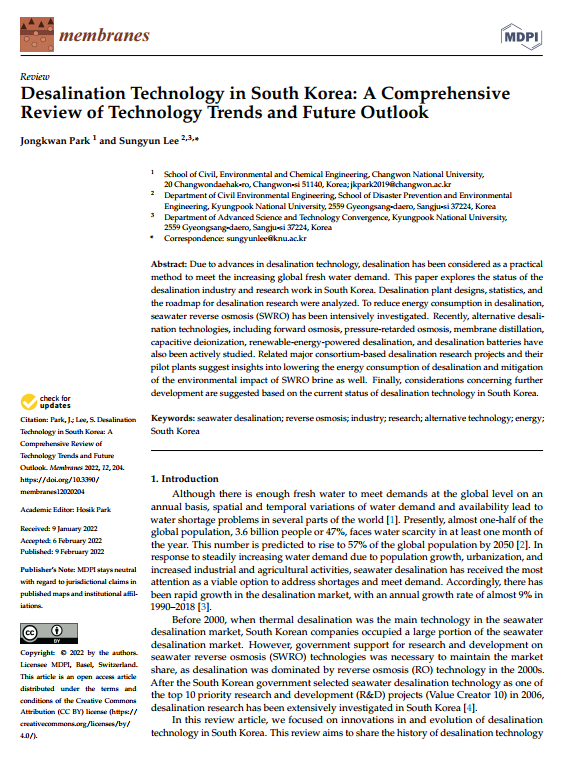
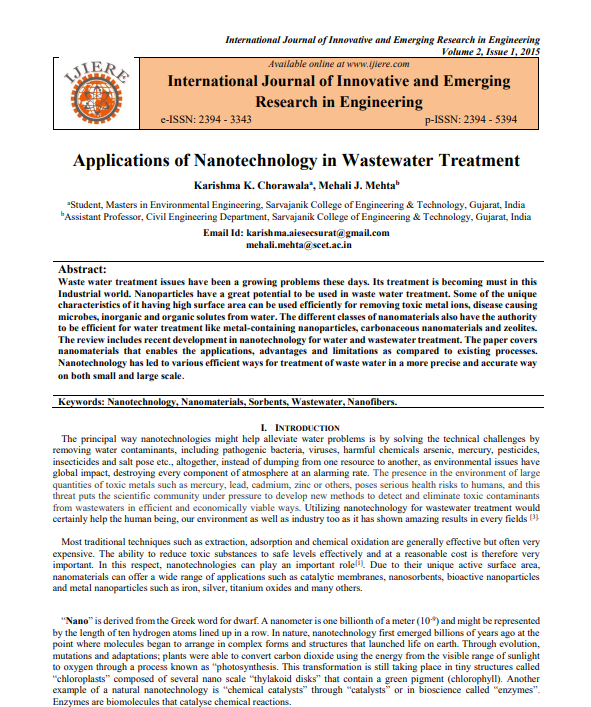

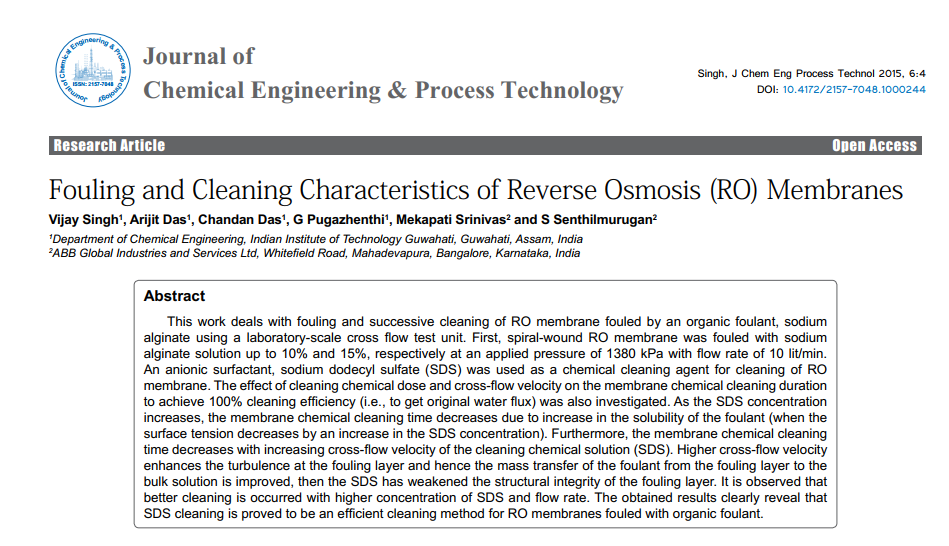
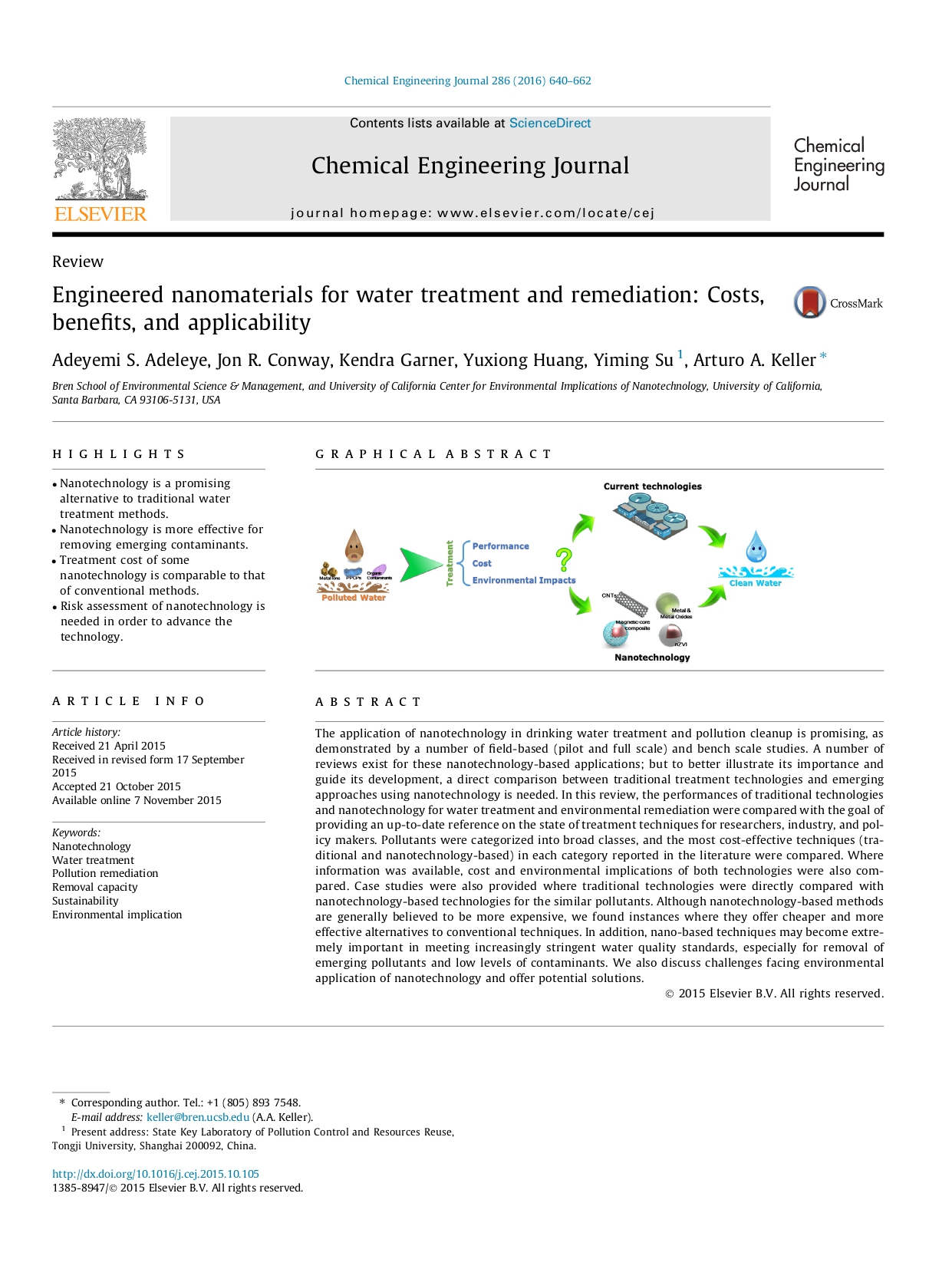
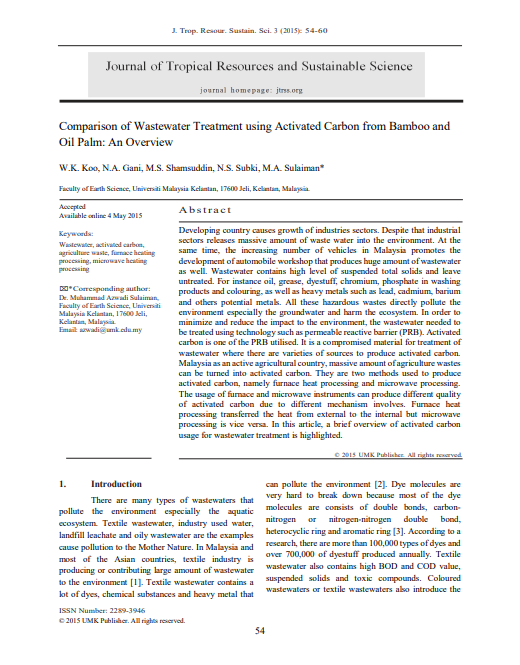
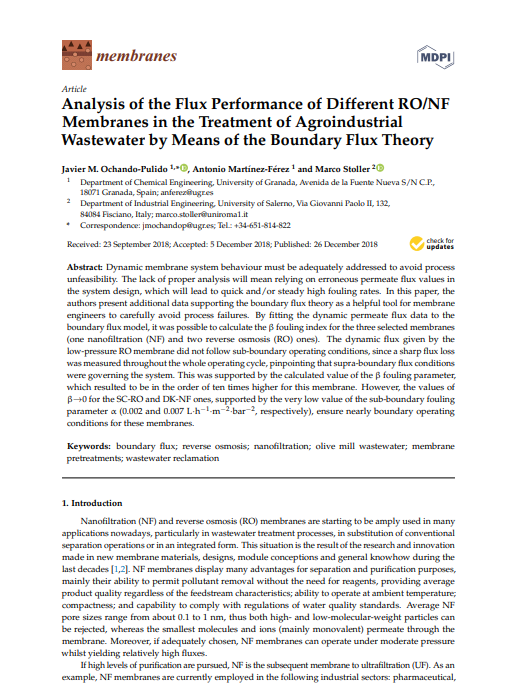
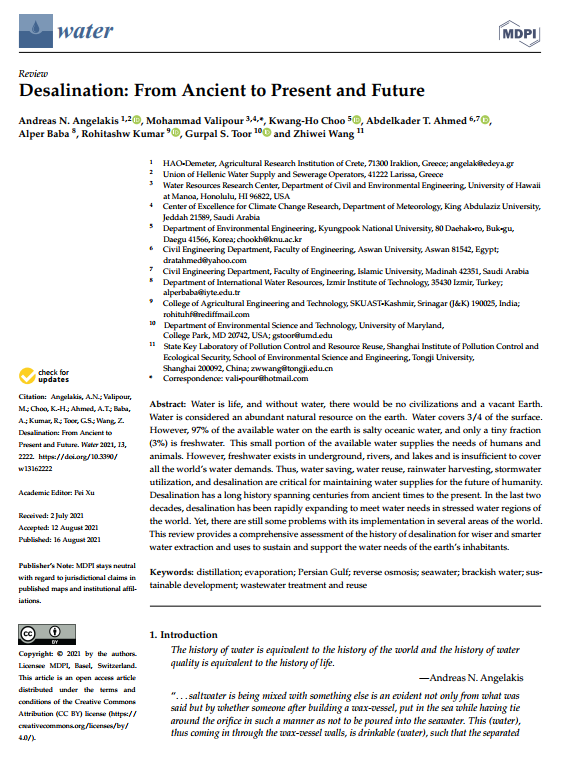
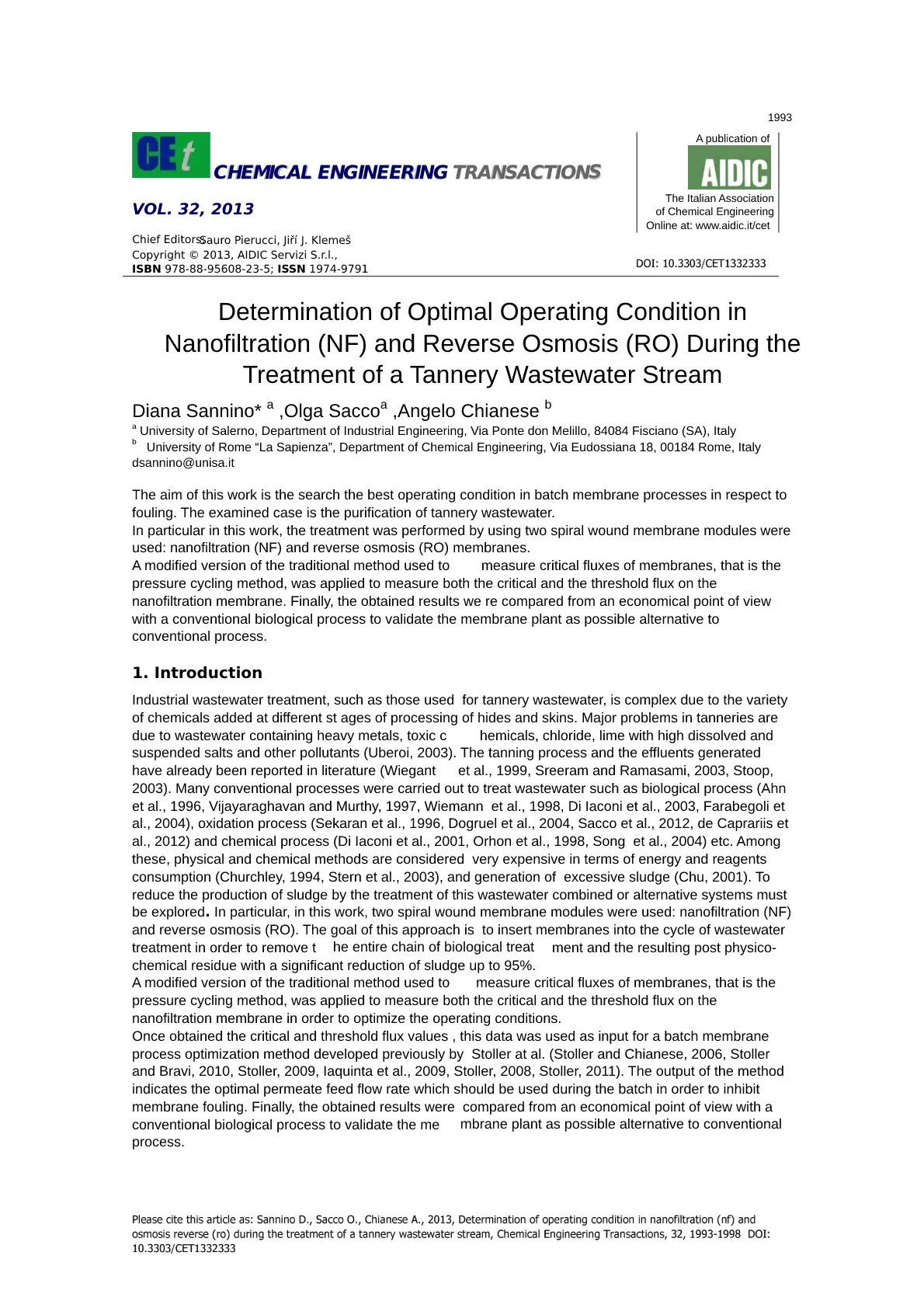

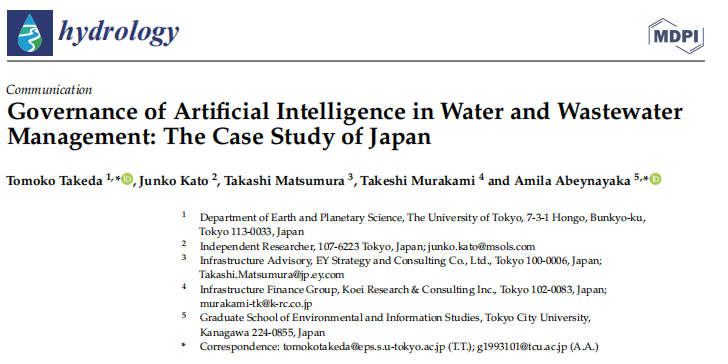
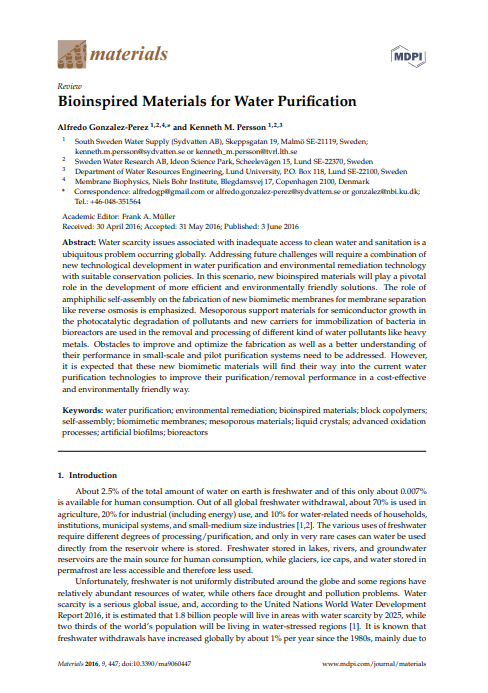
Reviews
There are no reviews yet.